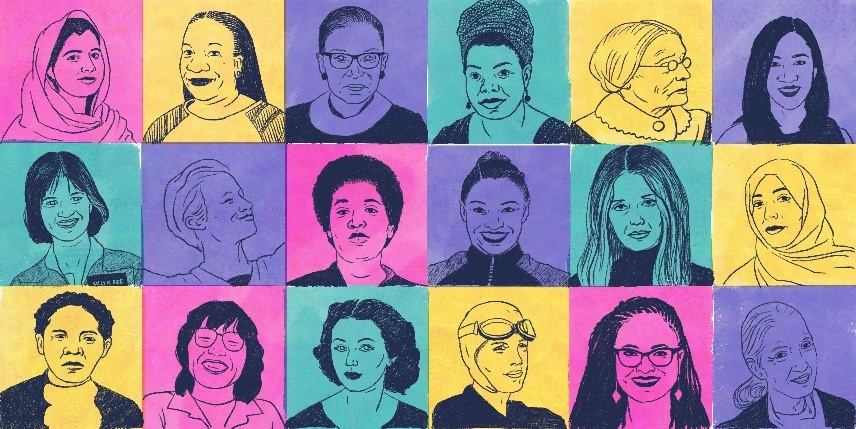
Throwing off the Weight and Changing “the Rules”
By Bess McKinney, EICL Co-Coordinator
I think a lot about identity as an equity and inclusion coordinator—how it is shaped, how to support and celebrate different facets of it, how we can help students understand and support the identities of others. These past three weeks, over the course of Women’s History Month, I’ve been thinking about the ways in which the definitions and expectations around those identities can limit us. Further, I’ve become even more aware how critical it is to help students at EPS find the power to create their own understandings of their identities.
This sentiment, that throwing off the weight of identity expectations is as important as understanding one’s identity, was reinforced when I reread Chimamanda Ngozi Adiche’s We Should All Be Feminists. At one point, Adichie asks us to “imagine how much happier we would be, how much freer to be our true individual selves, if we didn’t have the weight of gender expectations.” What would it mean for women— for all of us—to be able to throw off the weight of gender expectations, for us to each be able to define what we could do? What would it mean for all the students in our classrooms? How much freer might they feel?
These gender expectations still limit most of us. As the teen boy in Jason Reynold’s Long Way Down says, “I FELT LIKE CRYING/ which felt like/ another person/ trapped behind my face/ tiny fists punching/ the backs of my eyes/ feet kicking/ my throat at the spot/ where the swallow/ starts./ Stay put, I whispered to him,/ Stay strong, I whispered to me./ Because crying/ is against/ The Rules.” The rules for who we are “supposed” to be, what we are “supposed” to do, prevent us from really being and doing.
That is not to say, of course, that redefining the rules and throwing off the weight of traditional gender expectations is simple. Societal expectations come with limitations. Need proof? This week’s Supreme Court Justice nomination hearing for Judge Ketanji Brown Jackson was only the seventh time a woman has sat in front of the Senate Judiciary Committee to interview for a position on the high court. How many times has a man interviewed for a U.S. Supreme Court seat? 163. Throwing off the weight and breaking the rules of gender norms and expectations requires all of us, then, because they are so heavy, heavy with history, heavy with tradition, heavy with power and fear. But just think what we would all be able to do if we were all allowed to cry, and we were all encouraged and believed that we could be U.S. Supreme Court Justices. And, ultimately, that is what I think Women’s History Month is about—it’s about seeing our history, yes, and seeing the progress we’ve made in bringing down gender limitations and norms. And it is also about imagining what else is possible, what other rules can be changed and what other weight can be thrown off.

